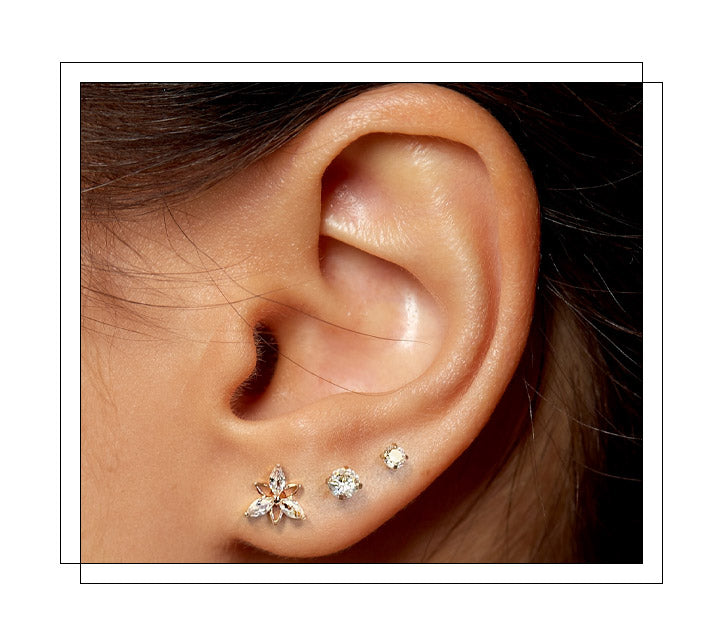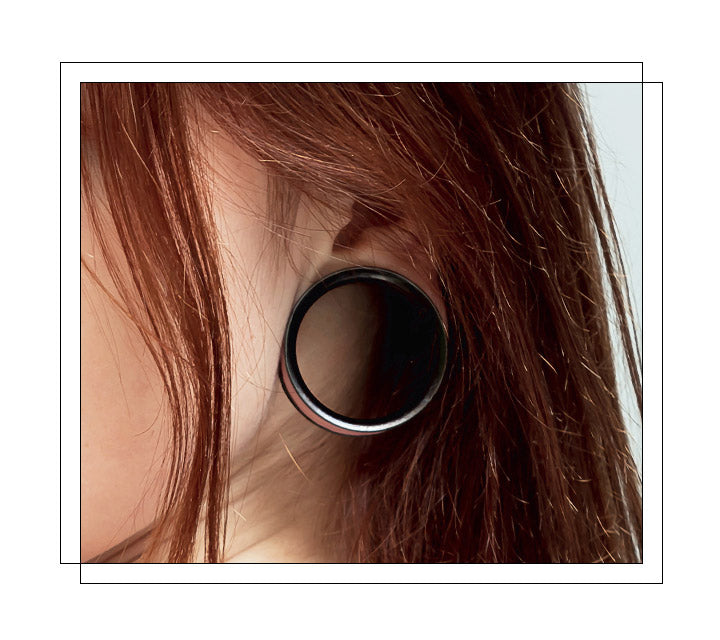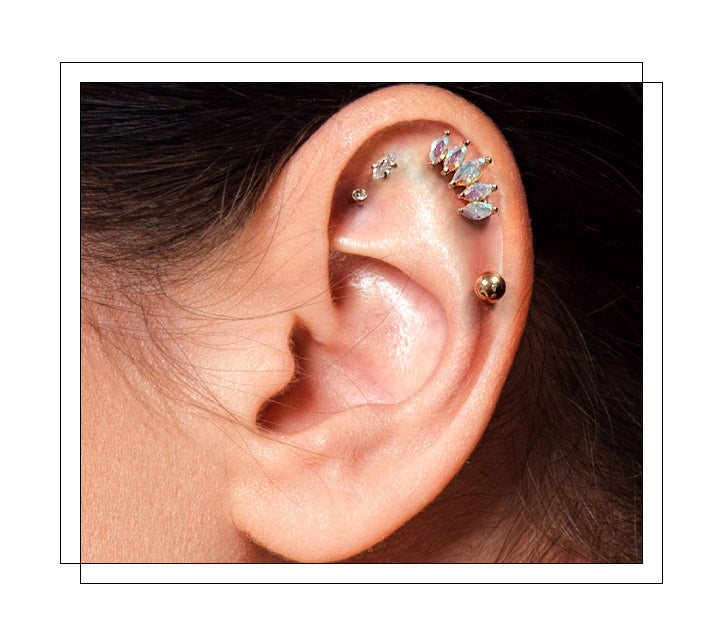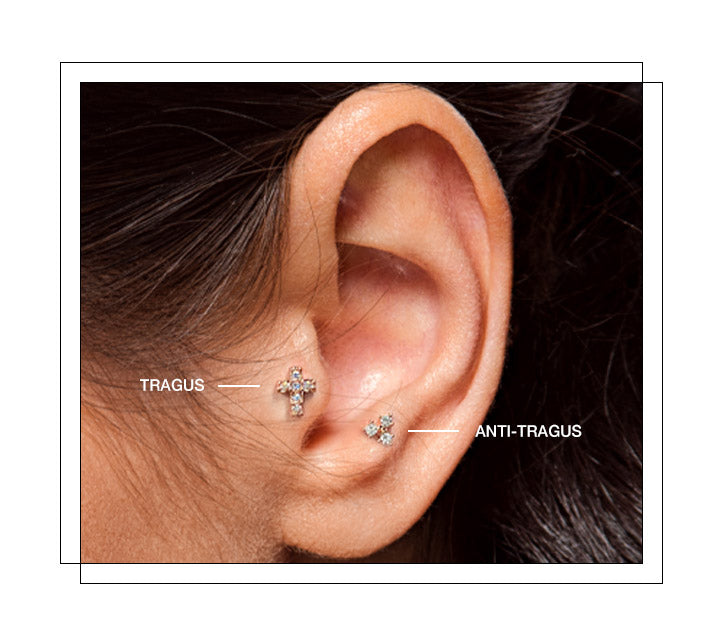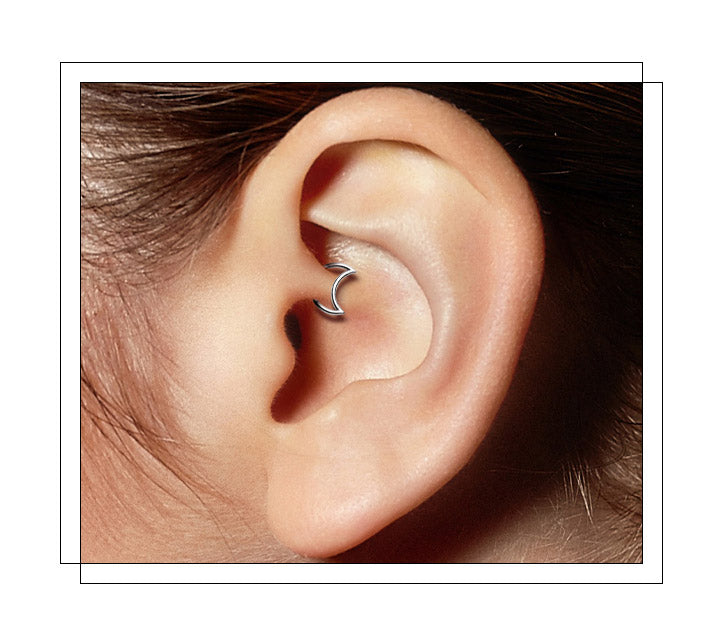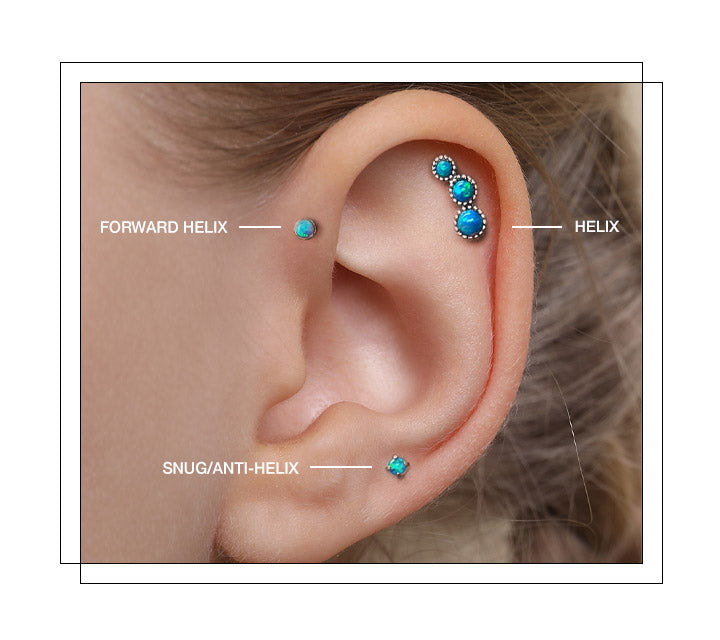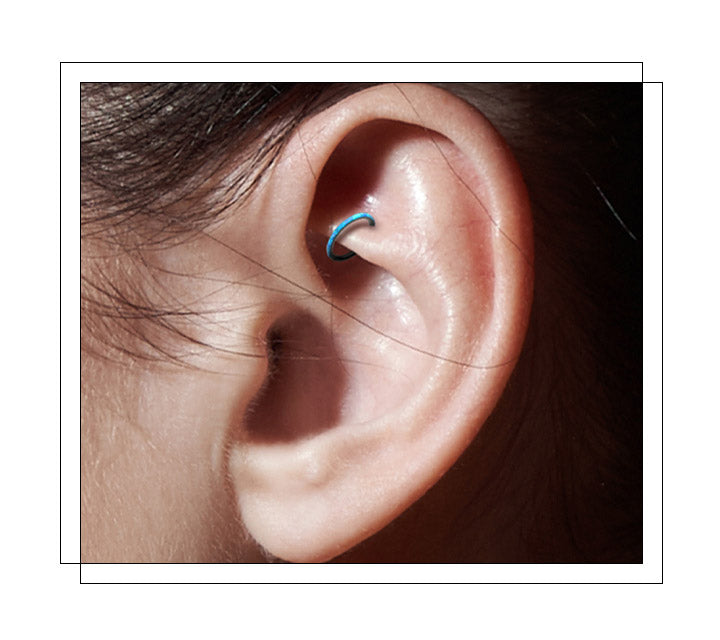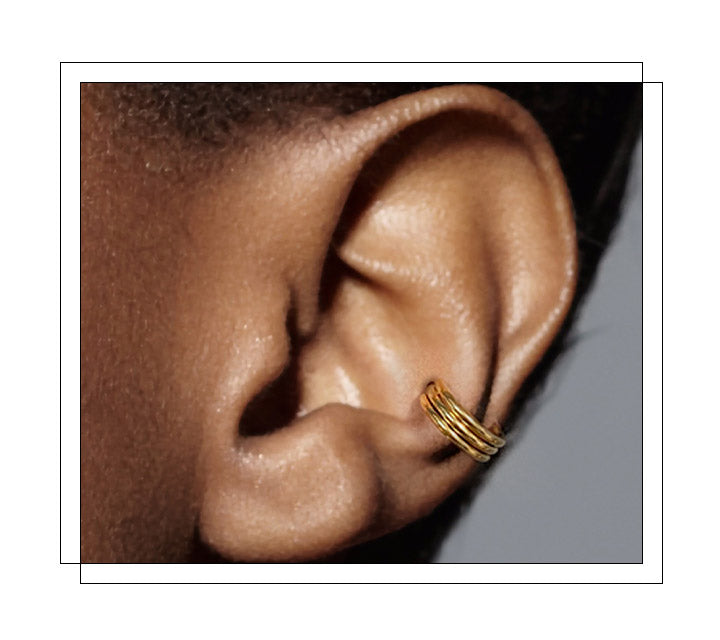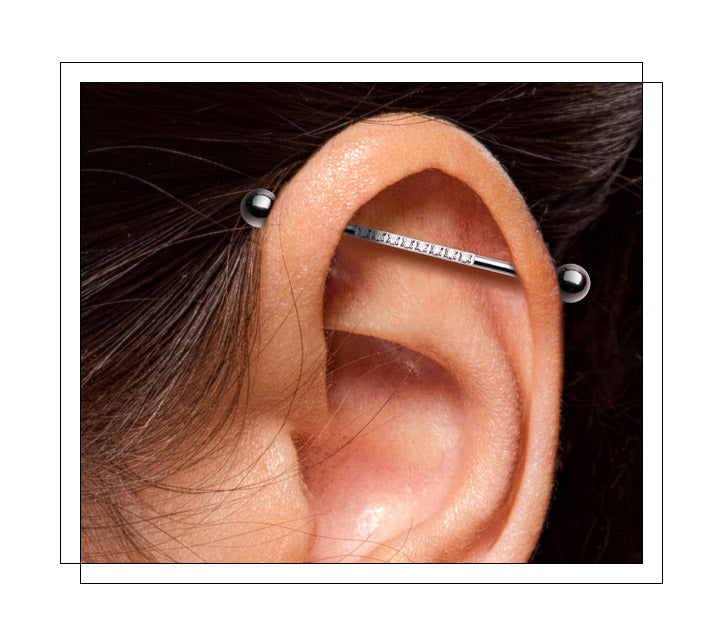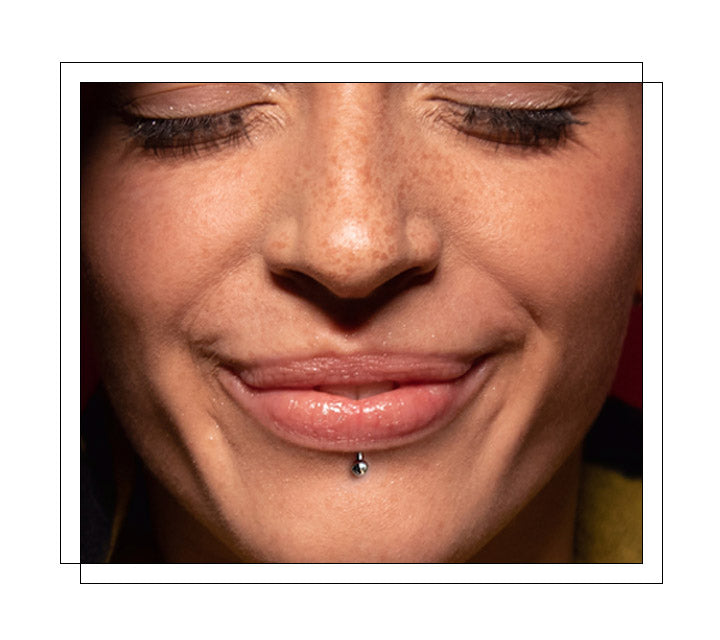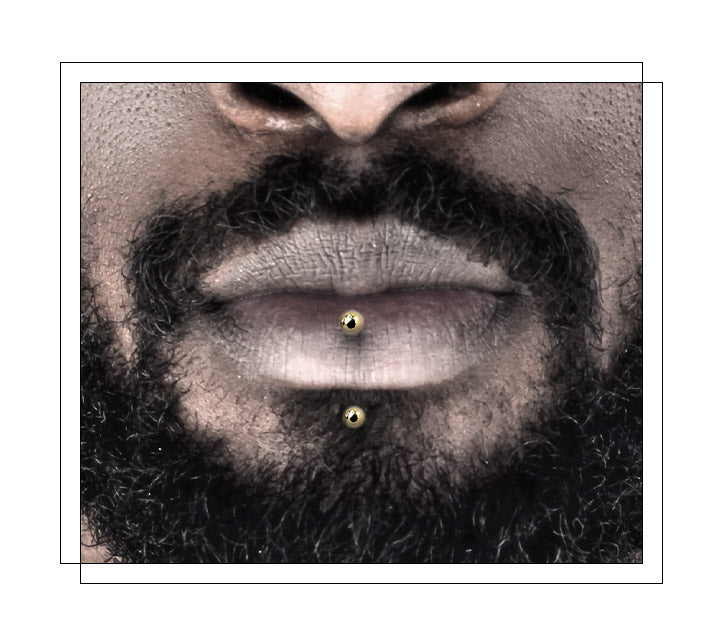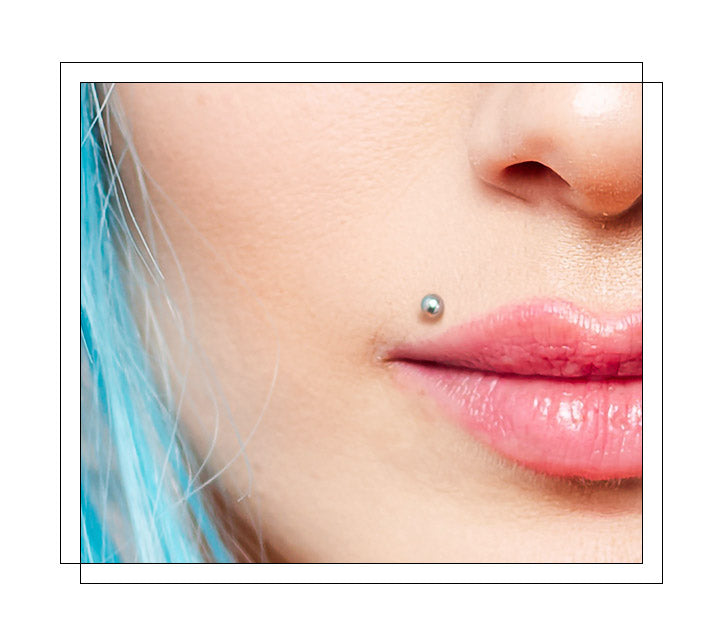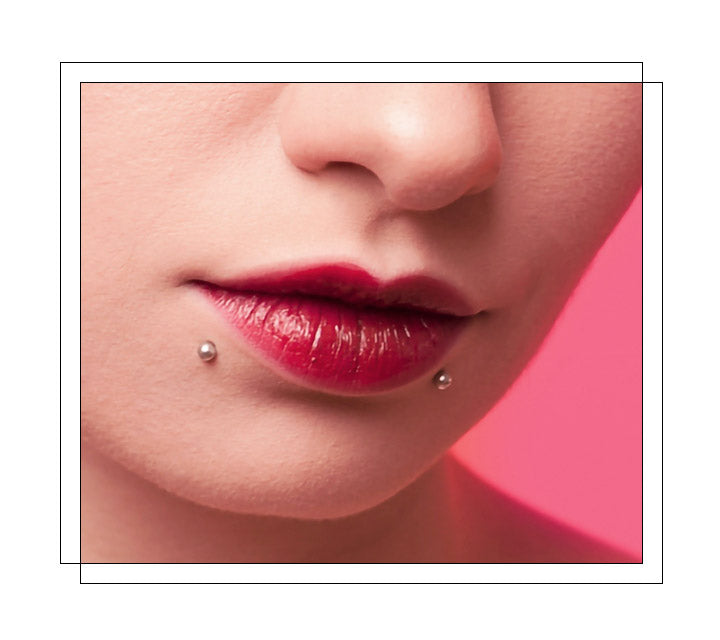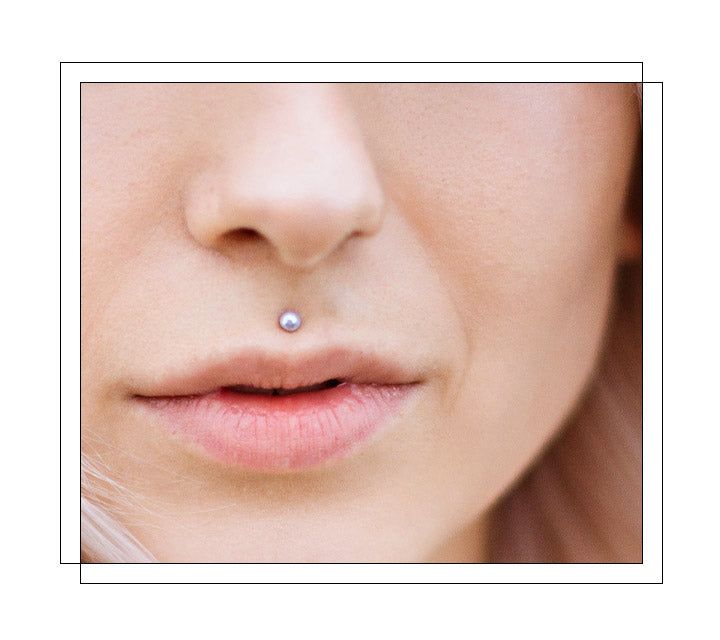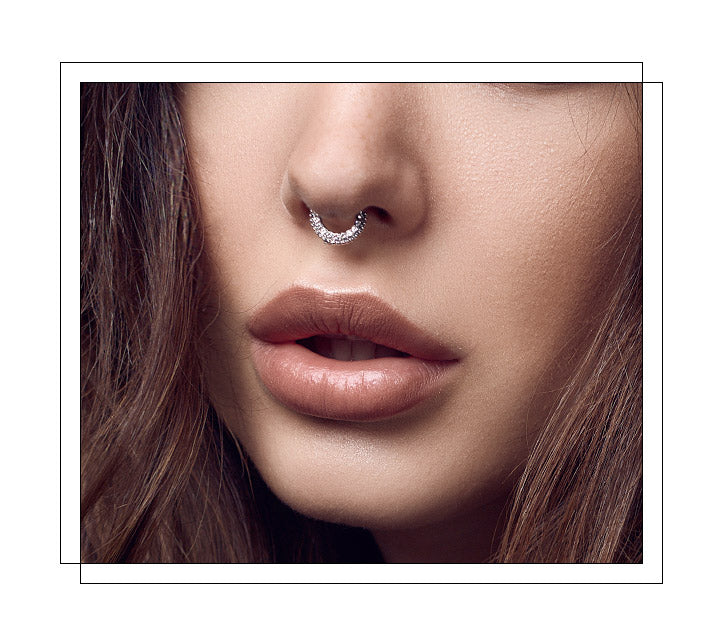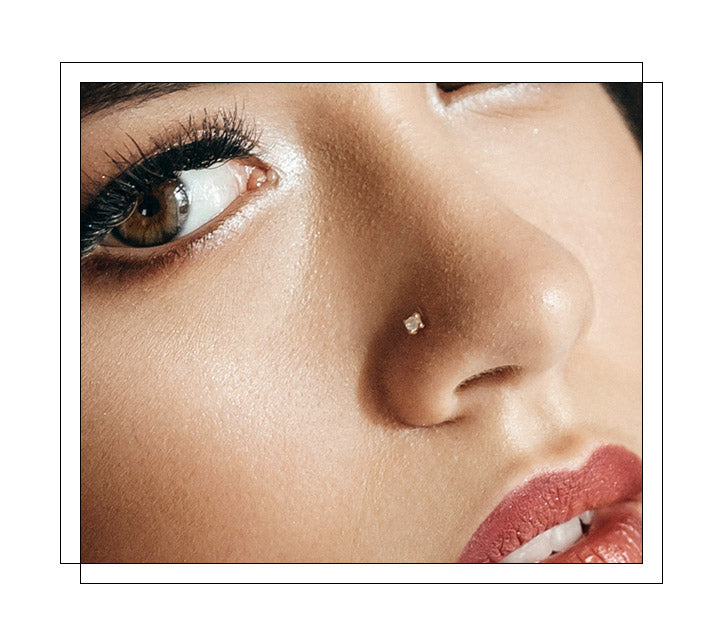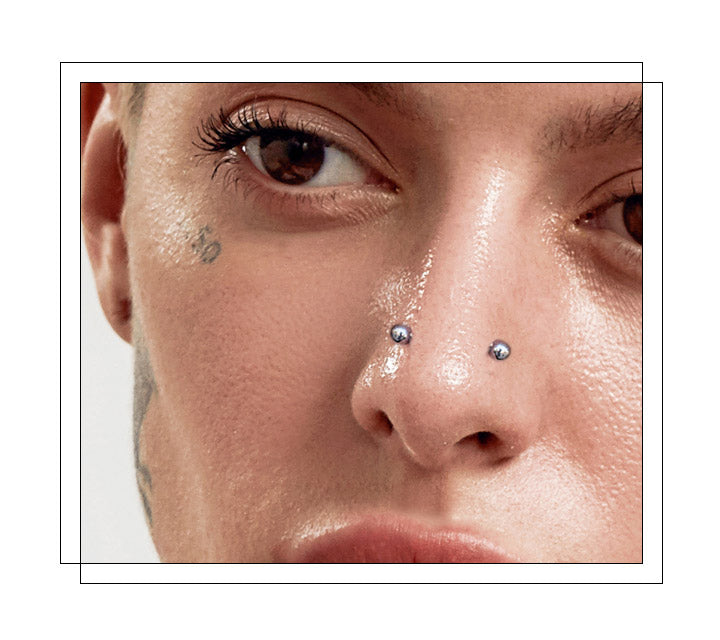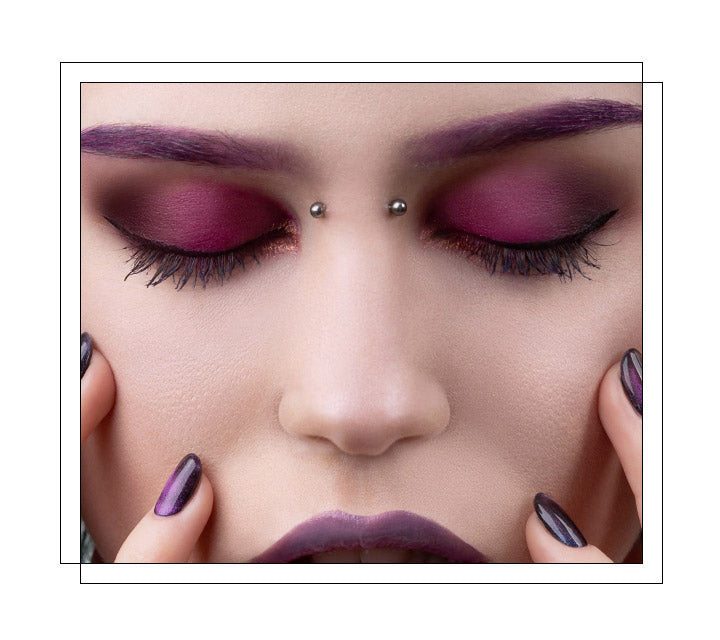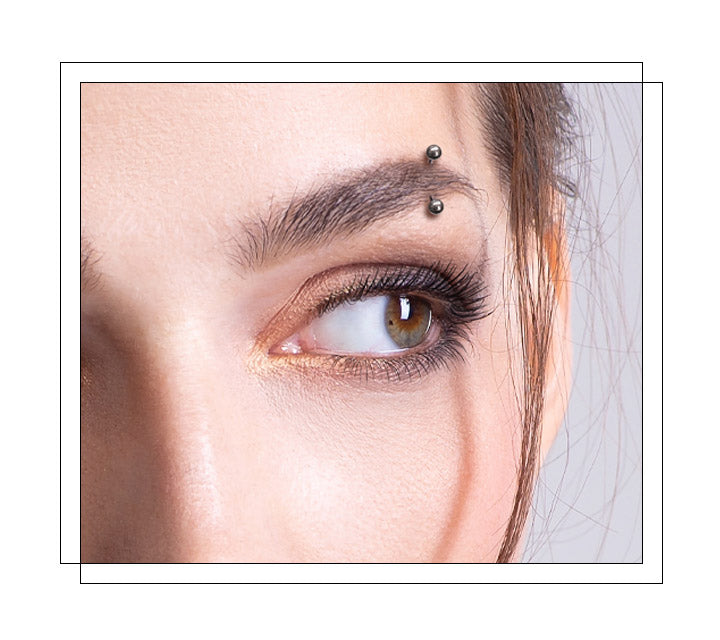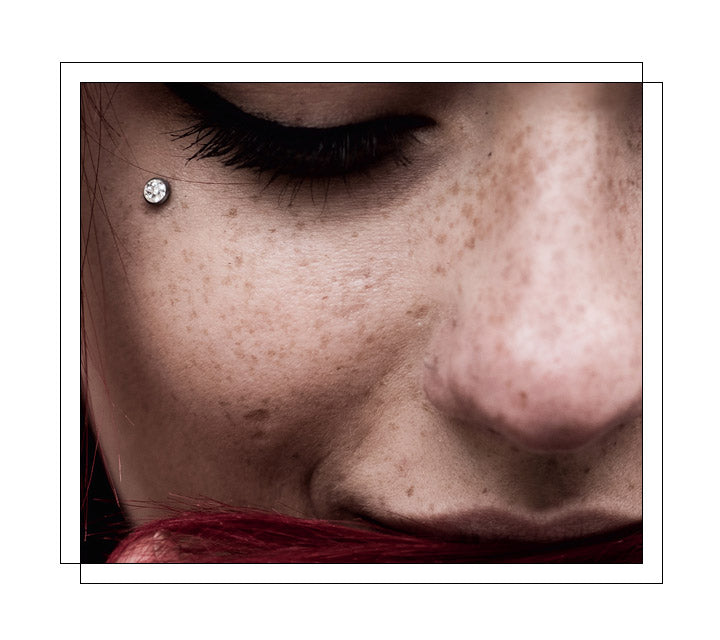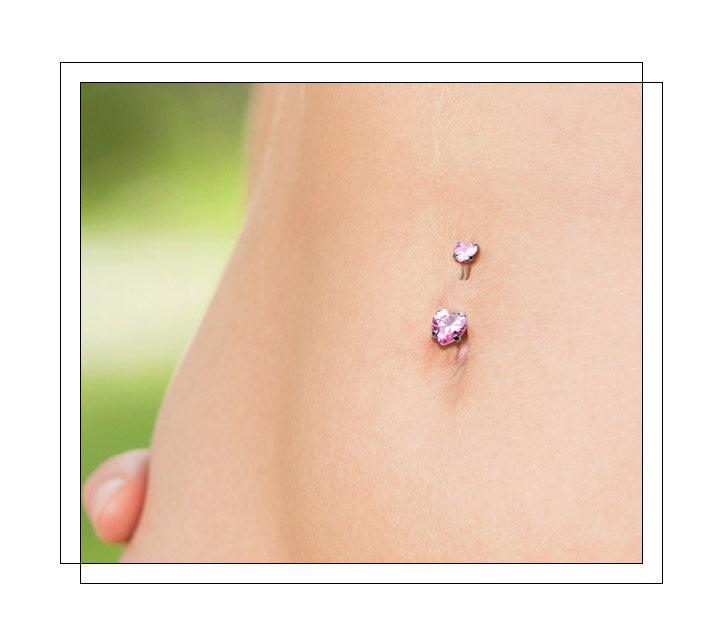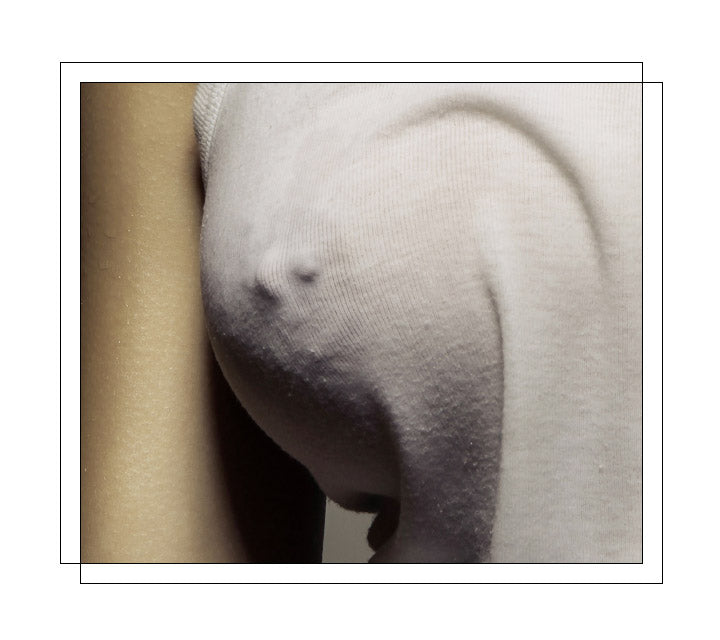EARLOBE
Located on the lower, fleshy part of the ear, earlobe piercings are the most common type of piercing. A standard lobe piercing is the classic and easiest part of the ear to heal. This piercing is the most common yet versatile. Once it is healed, the possibilities are endless. We have every jewelry type to accommodate your earlobe piercings from fashion earrings too many different types of piercings.
6 to 8 weeks
Standard Gauge
18 to 22 Gauge
Common Length/Diameter
1/4" (6mm) to 3/8" (10mm)
Popular Styles
Labrets/Flat Back Studs
Cartilage Barbells
Captive Bead Rings (CBR)
Horseshoe Barbells
Clicker Hoops
Bendable Hoops
Fashion Earrings
PLUGS
Located on the lower fleshy part of the earlobe, plug piercing typically starts out with an 18 gauge earlobe. Once the piercing is fully healed, gradually stretch to enlarge the hole. It is important to allow time to heal between stretches to the next size up to avoid any damage to the lobe, which may take 6-8 weeks between the stretch. We carry up to 3” plugs, so be sure to keep stretching if your heart desires.
6 to 8 weeks between each size up
Standard Gauge
18 Gauge to 1"+ (25mm & up)
Popular Styles
Plugs
Ear Hangers/Weights
Plug Hoop Earrings
Straight Tapers
Ear Stretching Kits
Cartilage
Located on the flat part of the upper ear cartilage. Typically, people can fit one to three flat back piercings. While it takes longer, the overall healing process isn’t bad at all. The most difficult part is the first two weeks after getting it pierced with some mild pain and discomfort. One of the most popular and sought-after piercings of all time, and we have every type and material of piercing jewelry available.
6 to 12 months
Standard Gauge
14 to 16 Gauge
Common Length/Diameter
1/4" (6mm) to 3/8" (10mm)
Popular Styles
Labrets/Flat Back Studs
Curved Barbells
Captive Bead Rings (CBR)
Horseshoe Barbells
Clicker Hoops
Bendable Hoops
TRAGUS/ANTI-TRAGUS
The tragus is located on the cartilage of the external opening of the ear, creating a sweet little addition to any curated ear. The anti-tragus is located in the small, relatively vertical lip of the cartilage above the earlobe, near the lower frontal rim of the conch, adjacent to the tragus. Both of these piercings are gaining popularity, due to the constellation and micro stud type piercing styles.
3 to 6 months
Standard Gauge
16 to 18 Gauge
Common Length/Diameter
1/4" (6mm) to 3/8" (10mm)
Popular Styles
Labrets/Flat Back Studs
Captive Bead Rings (CBR)
Horseshoe Barbells
Clicker Hoops
Bendable Hoops
DAITH
Located on the thick part of the cartilage in the inner ear in line with the tragus. The area is often referred to as the crux of the helix. It’s also the hoop that hugs the cartilage on the inside of your ear. It is the innermost (and smallest) fold of cartilage in the ear found directly where the inner ear above the canal touches the outer ridge of the ear. Daith piercings tend to take slightly longer than other piercings to heal.
3 to 9 months
Standard Gauge
14 to 18 Gauge
Common Length/Diameter
5/16" (8mm), 3/8" (10mm)
Popular Styles
Curved Barbells
Captive Bead Rings (CBR)
Horseshoe Barbells
Clicker Hoops
Bendable Hoops
HELIX/SNUG
Located on the upper part of the ear’s cartilage. Similar to a flat piercing, but closer to the edge of the ear. Commonly known as a cartilage piercing. There are several variations including the forward helix, double helix, triple helix, and anti-helix (snug) piercings that differentiates the type where they’re located on the ear. Because of the plethora of placement choices, you can get creative with your ear curation.
3 to 12 months
Standard Gauge
14 to 18 Gauge
Common Length/Diameter
1/4" (6mm) to 3/8" (10mm)
Popular Styles
Labrets/Flat Back Studs
Captive Bead Rings (CBR)
Horseshoe Barbells
Clicker Hoops
Bendable Hoops
Rook
Located in the smaller fold of cartilage in the upper part of the ear. Also, known as the “perforation of the anti-helix” aka the cartilage ridge between the outer and inner ear above your tragus. Traditionally, a rook piercing is done vertically in the ear ridge so both sides of the jewelry are displayed. It’s essentially the sister to the daith piercing and the more pratical cartilage piercing.
3 to 9 months
Standard Gauge
16 to 18 Gauge
Common Length/Diameter
1/4" (6mm) to 3/8" (10mm)
Popular Styles
Curved Barbells
Captive Bead Rings (CBR)
Horseshoe Barbells
Clicker Hoops
Bendable Hoops
Conch
Located in the thick, bowl-shaped part of the ear while nestled in the lower cartilage of the ear. The conch piercing has two types: the inner conch and the outer conch piercing. The inner conch is located lower in the ear, while the outer conch is located closer to the helix. Refers to the inner cup of the ear, which gets this name because of its resemblance to a conch shell.
3 to 9 months
Standard Gauge
14 to 18 Gauge
Common Length/Diameter
5/16" (8mm) to 1/2" (12mm)
Popular Styles
Labrets/Flat Back Studs
Curved Barbells
Captive Bead Rings (CBR)
Horseshoe Barbells
Clicker Hoops
Bendable Hoops
INDUSTRIAL/SCAFFOLD
Located through the sides of the cartilage in the ear. Also, referred to as a scaffold. The barbell is first inserted from behind the ear and goes diagonally towards the front of the upper cartilage and through the second piercing, secured by a screw on directly behind the second hole. The most common idustrial piercing connects the forward helix and the antihelix.
3 to 9 months
Standard Gauge
14 Gauge
Common Length
1-1/8" (29mm) to 2" (51mm)
Popular Styles
Industrial Barbells
LIP/LABRET
Located on the right on, or around, the lip area. It can also be in the center, as well as the right or left side of the bottom lip. Lip piercing is always such a popular choice thanks to the sheer amount of style options available and ways to customize it. A labret piercing is traditionally a single perforation in the center just below the bottom lip, but not attached to the lip itself.
4 to 8 weeks
Standard Gauge
14 to 16 Gauge
Common Length
5/16" (8mm) to 3/8" (10mm)
Popular Styles
Labrets/Flat Back Studs
VERTICAL LABRET
Located just above the chin and centered below the bottom lip. It is not attached to the lip itself. Also known as a vertical labret, which places a curved barbell centered on the bottom lip - one end through the lip, and the other where a traditional labret would be placed. Perhaps the most unique aspect of the vertical labret piercing is that it never touches the inside of the mouth.
4 to 8 weeks
Standard Gauge
14 to 16 Gauge
Common Length
5/16" (8mm) to 3/8" (10mm)
Popular Styles
Curved Barbells
Monroe/Madonna
Located off-center lip piercing, placed above the upper lip. It is placed on the left-hand side to resemble Marilyn Monroe’s beauty mark, and a madonna piercing is the same, but only on the right-hand side. Both piercings are meant to emulate the beauty marks of their namesakes, these piercings characterize beauty. This piercing will highlight the lips and give anyone a unique sense of style!
3 to 9 months
Standard Gauge
14 to 16 Gauge
Common Length
1/4" (6mm), 5/16" (8mm), 3/8" (10mm)
Popular Styles
Labrets/Flat Back Studs
SNAKE BITES
Two piercings located under the bottom lip: one if on the right side and one is on the left side. Other variations of snake bites include spider bites, angel bites, shark bites, dahlia bites, etc. They all depend upon where the piercings are placed in proximity to the lip. Known for its striking appearance, the name of the piercing comes from the look it gives you: as if you have the fangs of a snake, or as if a snake bit you!
3 to 9 months
Standard Gauge
14 to 16 Gauge
Common Length
1/4" (6mm), 5/16" (8mm), 3/8" (10mm)
Popular Styles
Labrets/Flat Back Studs
Captive Bead Rings (CBR)
Horseshoe Barbells
Clicker Hoops
Bendable Hoops
MEDUSA/PHILTRUM
Located on the upper lip, centered in the middle of the lip through the philtrum and directly under the septum of the nose. Centered on the natural groove, a medusa piercing can be a subtle style statement on its own. It’s currently one of the fastest-growing trends in the world. It’s so popular because of its location and because it stands out, giving you a unique look!
2 to 4 months
Standard Gauge
14 to 16 Gauge
Common Length/Diameter
1/4" (6mm), 5/16" (8mm), 3/8" (10mm)
Popular Styles
Labrets/Flat Back Studs
TONGUE
Located through the tongue’s thickest parts. The most common is the midline piercing, a vertical piercing involving a needle going straight through at one point from top to bottom in the center of the tongue. There are several different tongue piercings in addition to the midline piercing: horizontal, snake eyes, frenulum, venom, and surface tongue piercing.
4 to 8 weeks
Standard Gauge
14 Gauge
Common Length
5/8" (16mm)
Popular Styles
Straight Barbells
SEPTUM
Located through the thin wall of cartilage that separates your left and right nostrils. It’s also one of the more common nose piercings. It’s often referred to as “the sweet spot”. Often referred to as a “bull ring” piercing. These piercings are wildly popular for how effortlessly cool they look! The septum piercing can be the biggest, extreme piercing; the small, delicate piercing; or it can be completely hidden when flipped!
4 to 8 weeks
Standard Gauge
14 to 16 Gauge
Common Length/Diameter
5/16" (8mm), 3/8" (10mm)
Popular Styles
Clicker Hoops
Bendable Hoops
Septum Retainers
Captive Bead Rings (CBR)
Horseshoe Barbells
NOSTRIL
Goes through the soft cartilage that surrounds the outside of the nasal passage. The piercing can be placed anywhere on the nostril. Nose piercings are perhaps the most popular piercings and are quite trendy. When it comes to nose piercings, your options are virtually endless, from a multitude of nose ring stylings to studs and everything in-between.
3 to 4 months
Standard Gauge
18 to 20 Gauge
Common Length
1/4"
(6mm) to 3/8" (10mm)
Popular Styles
Nose Studs
L-Shaped Nose Rings
Nose Screws
Nose Hoops
HIGH NOSTRIL
Located above the traditional nostril piercing, although they can be worn on their own, high nostril piercings are placed a few centimeters above the curve of the nostril crease and through the cartilage of the nose. It’s a great option for those with several facial piercings who want to layer them, or for people who want something a bit more unique. The pain is slightly more painful than a regular nostril piercing.
6 to 8 months
Standard Gauge
14 to 20 Gauge
Common Length
1/4" (6mm) to 5/16" (8mm)
Popular Styles
Nose Studs
L-Shaped Nose Rings
Labrets/Flat Back Studs
BRIDGE
A bridge piercing (aka Earl) is a horizontal bar placed in the skin across the bridge of the nose. It is considered a surface piercing and quite popular since the beads of the barbell are right in line with the eyes, giving it a gorgeous, balanced look. For an edgy, modern look a bridge piercing is truly unique! It is an easy way to achieve a bold and daring style that won’t go unnoticed!
8 to 12 weeks
Standard Gauge
14 to 16 Gauge
Common Length
3/8" (10mm), 7/16" (11mm), 1/2" (12mm)
Popular Styles
Straight Barbells
Curved Barbells
EYEBROW
Located above either the left or right eye, through the skin of the eyebrow. The most common location for an eyebrow piercing is from the outside corner of the eye at a 35-degree angle. It sits perpendicularly to the skin and has a separate entry and exit point, technically a surface piercing. There are five different types of eyebrow piercings: vertical, horizontal, nonstandard, multiple and anti-eyebrow piercings.
6 to 8 weeks
Standard Gauge
14 to 18 Gauge
Common Length
1/4" (6mm), 5/16" (8mm), 3/8" (10mm)
Popular Styles
Curved Barbells
Captive Bead Rings (CBR)
Horseshoe Barbells
Clicker Hoops
Bendable Hoops
DERMAL
A single-point piercing in which a micro dermal anchor is placed underneath the skin and slid into place. The top is then secured to the part of the anchor that is visible, and almost flush with the skin. Dermals do not have a separate entry and exit point for jewelry, unlike traditional piercings. Often placed anywhere on the body, including the face, neck, chest, arms, and hands.
3 to 9 months
Standard Gauge
14 Gauge Dermal Anchor
Popular Styles
Dermal Anchors
NAVEL
A belly button piercing, also known as a navel piercing, is done typically through the skin, directly above the belly buttons. The placement of a navel piercing can be on the top or bottom skin. A navel piercing is an anatomy-dependent piercing. Advanced belly button piercings consist of outies meaning the piercing is placed above or underneath the navel. Each belly button is unique and can have a variance in anatomy.
4 to 5 months
Standard Gauge
14 Gauge
Common Length
3/8" (10mm), 7/16" (11mm)
Popular Styles
Dangle Belly Rings
Non Dangle Belly Rings
Reverse Belly Rings
Curved Barbells (if pierced at 16 Gauge)
NIPPLE
Located usually at the base of the nipple where it rises from the areola. It can be pierced at any angle, but is usually done horizontally or sometimes done vertically. Horizontal nipple piercing is the most common type of nipple piercing through the sides of the nipple. It is important that the piercing goes through the base of the nipple and not the tip.
6 to 8 months
Standard Gauge
14 Gauge
Common Length
1/2" (12mm), 9/16" (14mm), 5/8" (16mm), 3/4" (19mm)
Popular Styles
Nipple Barbells
Nipple Shields
Nipple Clickers
Horseshoe Barbells
Captive Bead Rings (CBR)


